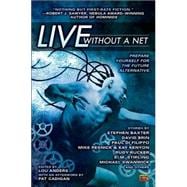
Note: Supplemental materials are not guaranteed with Rental or Used book purchases.
Purchase Benefits
What is included with this book?
| Introduction | p. 1 |
| Smoke and Mirrors, Parts I-IV | p. 5 |
| O One | p. 12 |
| Clouds and Cold Fires | p. 27 |
| New Model Computer | p. 49 |
| Conurbation 2473 | p. 58 |
| The Memory Palace | p. 70 |
| Dobcheck, Lost in the Funhouse | p. 92 |
| Rogue Farm | p. 104 |
| Swiftwater | p. 120 |
| The Crystal Method | p. 132 |
| Reformation | p. 150 |
| Singletons in Love | p. 167 |
| I Feed the Machine | p. 190 |
| Reality Check | p. 208 |
| Frek in the Grulloo Woods | p. 213 |
| All the News, All the Time, from Everywhere | p. 229 |
| The Swastika Bomb | p. 246 |
| No Solace for the Soul in Digitopia | p. 302 |
| Afterword: Living without A Net?! | p. 318 |
| Table of Contents provided by Ingram. All Rights Reserved. |
The New copy of this book will include any supplemental materials advertised. Please check the title of the book to determine if it should include any access cards, study guides, lab manuals, CDs, etc.
The Used, Rental and eBook copies of this book are not guaranteed to include any supplemental materials. Typically, only the book itself is included. This is true even if the title states it includes any access cards, study guides, lab manuals, CDs, etc.